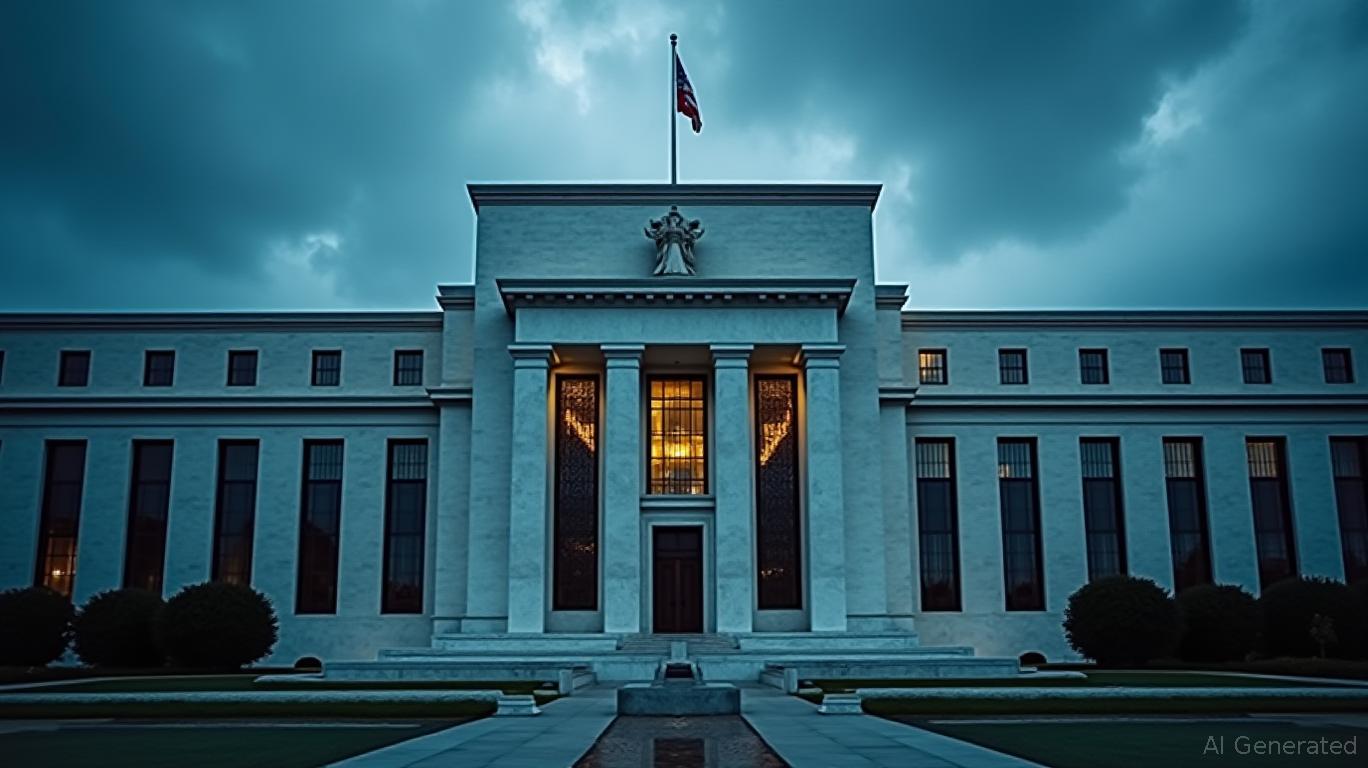Navigating the Fed's Crossroads: Rate-Sensitive Sectors in a Volatile Landscape
The Federal Reserve's June 2025 decision to hold rates steady at 4.25%–4.5% has amplified tensions between its cautious stance and growing political and market pressures to cut rates. With President Trump labeling Chair Jerome Powell “stupid” for resisting cuts, and traders pricing in a 70% chance of a September reduction, the stage is set for a tug-of-war between policy discipline and economic pragmatism. For investors, this uncertainty creates both risk and opportunity in rate-sensitive sectors like financials, real estate, and mortgage-linked equities.

The Fed's Tightrope Walk
The June FOMC statement underscored the central bank's reluctance to preemptively ease policy, despite mounting calls for action. Powell emphasized a “data-dependent” approach, with two key conditions for cuts:
1. Labor market softening: The Fed wants 2–3 months of weakening jobless claims or higher unemployment before acting.
2. Inflation containment: Even as headline inflation has cooled to 2.4%, core inflation (excluding energy/food) remains stubborn at 2.8%, above the 2% target.
Geopolitical risks, such as Middle East tensions pushing oil prices higher, add to the Fed's caution. Meanwhile, Fed funds futures now reflect a 65% probability of at least one cut by September, a stark contrast to the Fed's own “dot plot,” which includes seven officials skeptical of any 2025 reductions. This divergence sets the stage for volatility as markets parse every Fed utterance for clues.
Financials: Riding the Rate Rollercoaster
Financial stocks (e.g.,
(JPM), (BAC)) are among the most rate-sensitive equities. While high rates boost net interest margins, prolonged uncertainty could pressure earnings if loan demand weakens.- Bull Case: A September cut would lift bank stocks, as lower rates reduce mortgage refinancing costs and stabilize consumer lending.
- Bear Case: If the Fed stays hawkish, traders might rotate into defensive sectors, leaving financials vulnerable to profit-taking.
The sector's six-month underperformance (up 0.1% vs. the S&P 500's -1.3%) suggests it's pricing in a Fed pivot. Actionable Idea: Overweight regional banks with strong capital buffers (e.g.,
(TFC)) and avoid pure-play lenders reliant on short-term borrowing.Real Estate: Betting on a Fed Pause or a Policy Misstep
Real estate—particularly mortgage REITs (mREITs)—is the ultimate rate-sensitive sector. Companies like AGNC Investment (AGNC) and ARMOUR Residential (ARR) thrive when rates stabilize or decline, as their adjustable-rate mortgages (ARMs) reset downward.
- Upside Catalyst: A September cut would send mREITs soaring. Their average dividend yield of 4.4% and P/FFO ratios at decade lows make them attractive for income seekers.
- Downside Risk: Persistent high rates or a Fed surprise could crush these leveraged players.
Commercial real estate (e.g., Equity Residential (EQR)) faces dual challenges:
1. Office vacancy concerns post-pandemic.
2. Rising cap rates due to inflation, compressing valuations.
Actionable Idea: Overweight mREITs if the Fed signals a pause but avoid office-focused REITs until vacancy rates stabilize.
Geopolitical Risks: The Wild Card in Rate Calls
The Israel-Iran conflict and U.S. tariff policies add layers of uncertainty. Oil prices near $90/barrel could reignite inflation, forcing the Fed to stay hawkish. Conversely, a geopolitical ceasefire might ease energy costs, accelerating the Fed's pivot. Investors should monitor:
- Inflation data: Core PCE prints below 2.5% would strengthen September cut odds.
- Tariff developments: A rollback of Trump's trade barriers could lift GDP growth and reduce Fed reluctance.
Positioning for Volatility
The June FOMC meeting is pivotal. Here's how to navigate the crossroads:
1. If the Fed Signals a Pause:
- Buy mREITs (AGNC, ARR) and regional banks (TFC).
- Overweight infrastructure REITs (e.g., NorthWestern Energy (NWE)) for their regulated monopolies and inflation hedges.
2. If the Fed Stays Hawkish:
- Rotate into utilities (e.g., Eversource Energy (ES)) and defensive Financials with regulated arms.
- Use options to hedge bets: Sell calls on mREITs to lock in gains if rates stay high.
Final Take
The Fed's hesitation to cut rates has created a “wait-and-see” market for rate-sensitive sectors. While political pressure and Fed caution clash, traders are pricing in a September pivot. Investors should remain nimble: exploit dips in financials/real estate on Fed hawkishness, but prepare for volatility if geopolitical risks flare. As Powell once said, “The Fed's job is to make sure the economy doesn't run out of gas.” For now, the tank is half full—and the race is on.

Comments
No comments yet